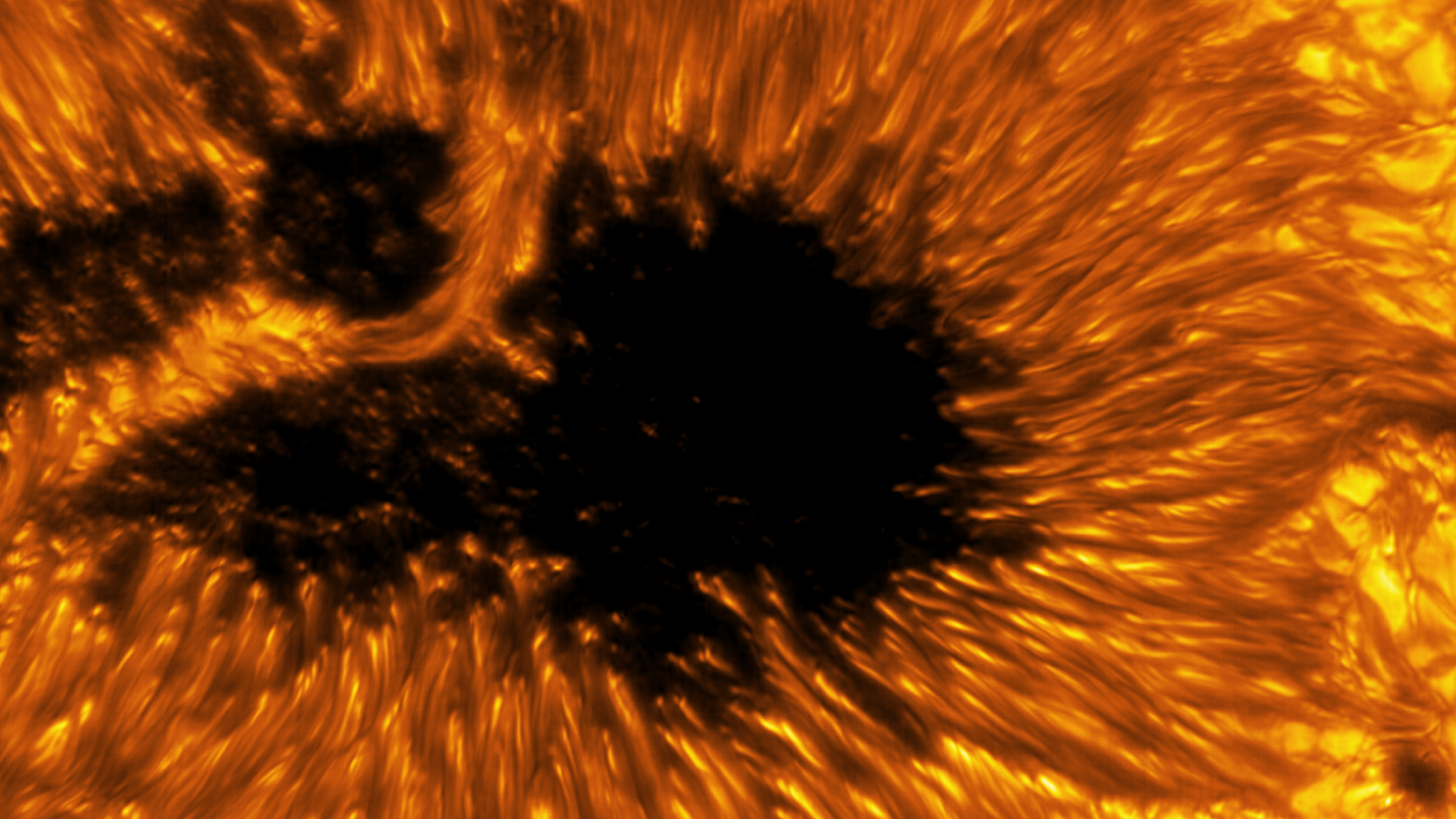

Just in time for the light-filled days before the summer solstice in the Northern Hemisphere, the National Science Foundation’s Daniel K. Inouye Solar Telescope (DKIST) has released some stellar new images of the sun. Observations from the biggest and most powerful solar telescope on Earth show the movement of plasma in the solar atmosphere, intricate details of the sunspot regions, and the sun’s roiling convective cells. One of DKIST’s first-generation instruments, called the Visible-Broadband Imager, obtained these snaps of the sun that were released to the public on May 19.
The sunspots in the images are cool and dark regions on the sun’s “surface,” called the photosphere. Although sunspots are short-lived, strong magnetic fields persist here. The sunspots vary in size, but many are about the size of Earth, if not even bigger. Groups of sunspots can erupt in explosive events such as solar flares or coronal mass ejections (CME), which generate solar storms. Flares and CMEs influence the sun’s outermost atmospheric layer called the heliosphere, and these disturbances have a long reach, even messing with Earth’s infrastructure.
[Related: The sun’s chromosphere is shades of golden in these new images.]
Sunspot activity is also tied to cycles of about 11 years. During a cycle, sunspot and flare activity will rise to a peak solar maximum, when the sun’s poles switch places. Then the activity recedes, falling to almost zero at solar minimum. Our most recent solar cycle, Solar Cycle 25, began in 2019, and is on the upswing: The next solar maximum is expected to take place in 2025.
Astronomers and solar physicists don’t know what creates sunspots or drives these solar cycles, but understanding more can help Earth prepare for CMEs. These ejections can hurl giant clouds of charged particles that slam into our planet’s magnetic field, affecting satellites, radio communications, and even the power grid.
Not all CMEs wreak havoc, though. Some cause the colorful aurora borealis (or northern lights) in the Northern Hemisphere and aurora australis in the Southern Hemisphere. In April, a CME generated a severe geomagnetic storm. While this geomagnetic storm was not disruptive, the northern lights it made were visible as far south as Arizona.
[Related: How hundreds of college students are helping solve a centuries-old mystery about the sun.]
The images also show convection cells, which measure up to 994 miles across, in the sun’s quiet regions down to a resolution of about 12 miles. The convection cells give the protosphere, or the visible surface of the sun, a speckled popcorn-like texture, as piping hot plasma rises up from the cells’ center and then travels out to the edges before cooling and falling.

In the layers of the solar atmosphere, the chromosphere sits above the photosphere. The chromosphere sometimes has dark hair-like threads of plasma called fibrils or spicules. They range from 125 to 280 miles in diameter and erupt up to the chromosphere from the photosphere and last only for a few minutes.
We can expect to see more stunning images of the cells and other solar features in the coming years, as the solar telescope becomes fully operational. DKIST is named in honor of the late Hawaiian Senator Daniel K. Inouye, is the largest solar telescope in the world at 13 feet-wide. It rests on the peak of the mountain and volcano Haleakalā (or “House of the Sun”) on the island of Maui. It is currently in Operations Commissioning Phase, the observatory’s learning and transitioning period. Scientists will use the solar telescope’s unique ability to capture data in unprecedented detail to better understand the sun’s magnetic field and drivers behind solar storms.